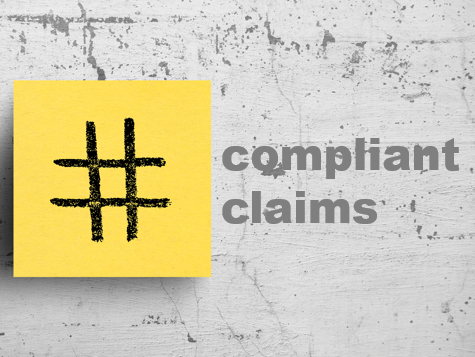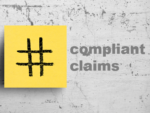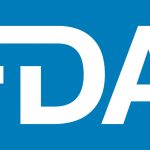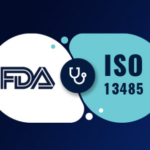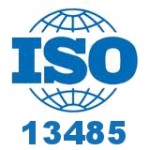Navigating the complexities of medical device marketing is challenging, with strict regulations governing what companies can and cannot claim about their products. Even well-intentioned organizations can encounter compliance issues. One of the key issues is misunderstanding what qualifies as a ‘claim.’ Many companies don’t realize that everything, from your website to social media posts, qualifies as promotional labeling and must comply with FDA and FTC regulations.
The Importance of Compliance in Medical Device Marketing
Marketing medical devices without fully understanding the regulatory landscape can lead to serious consequences. Too many companies, even established ones, land in hot water simply because they don’t understand the fine line between what they want to say and what they can say.
Understanding Common Claim Violations
Claim violations pose a significant risk for medical device manufacturers, potentially leading to serious regulatory consequences. Misbranding is a common issue in the medical device industry, occurring when a device’s labeling is false or misleading. This can result from deceptive statements or the omission of key information, such as insufficient usage instructions or warnings for specific patient groups. The FDA closely monitors these elements, and noncompliance can lead to regulatory action. For example, if a manufacturer does not include sufficient warnings about potential risks associated with a device, the FDA may take action, potentially resulting in fines or suspension of distribution.
Another common violation is making unsubstantiated claims, especially comparative statements that suggest a product’s superiority without supporting evidence. For instance, claims like ‘twice as effective’ as a competitor’s product must be backed by solid scientific evidence to prevent regulatory action. Such violations can result in the reclassification of the device and trigger enforcement actions, including warning letters, fines, or product recalls. It is crucial for manufacturers to be aware of these risks to maintain compliance and avoid costly penalties, which can severely impact business operations and damage market reputation.
If a device, label, or packaged material is false or misleading, it’s not only untrue, it can be forged, fraudulent, or deceptive. Labeling is deceptive if it creates a false impression in the mind of the reader, if it creates a false impression — a false or deceptive statement, or an omission by failure to inform the consumer.
The Difference Between FDA and FTC Oversight
The regulatory landscape for medical devices is complex, largely due to the distinct roles of the FDA and the FTC. The FTC regulates non-restricted medical devices, whereas the FDA monitors and regulates restricted medical devices. Restricted medical devices are those that have the potential for harmful effects, or they require collateral measures for use.
The FDA primarily oversees claims on product labeling, including packaging inserts and promotional materials, while the FTC is responsible for monitoring claims in advertisements to ensure they are truthful and not misleading. Understanding this delineation of responsibilities is essential for manufacturers, as it shapes their promotional strategies and compliance efforts. The FDA and FTC work together under a memorandum of understanding to ensure consistent enforcement of regulations.
For non-restricted medical devices, the FTC typically leads regulatory oversight, while the FDA handles restricted devices that carry a higher risk of harm if misused. This division of responsibility highlights the importance of understanding which agency regulates a specific device and the applicable rules. Manufacturers must adjust their promotional strategies accordingly to avoid regulatory scrutiny and potential violations.
Understanding the nuances of FDA and FTC oversight can help manufacturers reduce the risk of enforcement actions that could disrupt operations.
Best Practices for Compliant Claims
To ensure compliance in promotional materials, manufacturers must ensure that claims are both clear and supported by scientific evidence. A key strategy is ensure all claims, particularly comparative ones, are supported by solid data. For example, when making claims that a device is “more effective” or “faster,” it is essential your assertions are backed by clinical studies or empirical data. Manufacturers should also carefully review original clearance documents to ensure that promotional claims align with the device’s intended use, approved indications, and the correct patient population.
Regulatory experts must be involved during content creation to ensure promotional materials comply with both FDA and FTC regulations, helping to avoid costly errors that could jeopardize the device’s market presence. Device misbranding can stem from unsubstantiated claims. When making comparisons such as ‘twice as fast,’ ‘better than,’ or any other statement comparing another device or procedure, all claims must be substantiated with data. Regular audits of marketing materials on websites, brochures, and social media content, are critical for identifying these potential compliance issues early. Take proactive measures to identify and address discrepancies before they escalate into serious regulatory violations.
Following these best practices can cultivate a culture of compliance that safeguards your organization while enhancing patient safety and trust in your products.
Promotional Materials in Focus
Precise language in promotional materials is imperative. Marketing a medical device involves a variety of media, each subject to different levels of regulatory scrutiny. Brochures and packaging inserts are closely regulated and monitored by the FDA, which enforces strict rules on the claims that can be made. Social media has become a focal point for regulatory bodies, as companies can unintentionally make claims that go beyond the approved uses of their devices. This is especially concerning when promotional content suggests new uses or improved efficacy not supported in their regulatory clearance. Such missteps can result in warning letters or fines. Terms that imply new uses or enhanced efficacy can cause promotional content to fall into non-compliance.
Regular review of all marketing content by your regulatory experts is essential to ensuring promotional strategies stay within regulatory boundaries. This diligence not only ensures compliance but promotes a responsible marketing approach that prioritizes patient safety and informed decision-making. Understanding the regulations and their impacts on marketing strategies can help you more effectively promote medical devices while staying within established guidelines. And, in a highly competitive market, ensuring compliance with medical device claims can give your company a distinct advantage.
Whether you’re in marketing, regulatory affairs, or leadership, It’s not just about avoiding fines or recalls—it’s about developing a claims strategy that is both effective and compliant to protect your brand’s reputation for long-term success.
You Can’t Say That! Medical Device Claims Masterclass
On October 10th at 12:00 PM ET, Lott will host the You Can’t Say That! Medical Device Claims Masterclass, a one-hour webinar designed to help professionals in the MedTech space understand the intricacies of medical device claims. With a blend of regulatory insight and real-world examples, Lott will guide attendees through the dos and don’ts of claims, covering both the FDA and FTC guidelines.
Link to register: https://us06web.zoom.us/
MedTech Intelligence Content Partner

